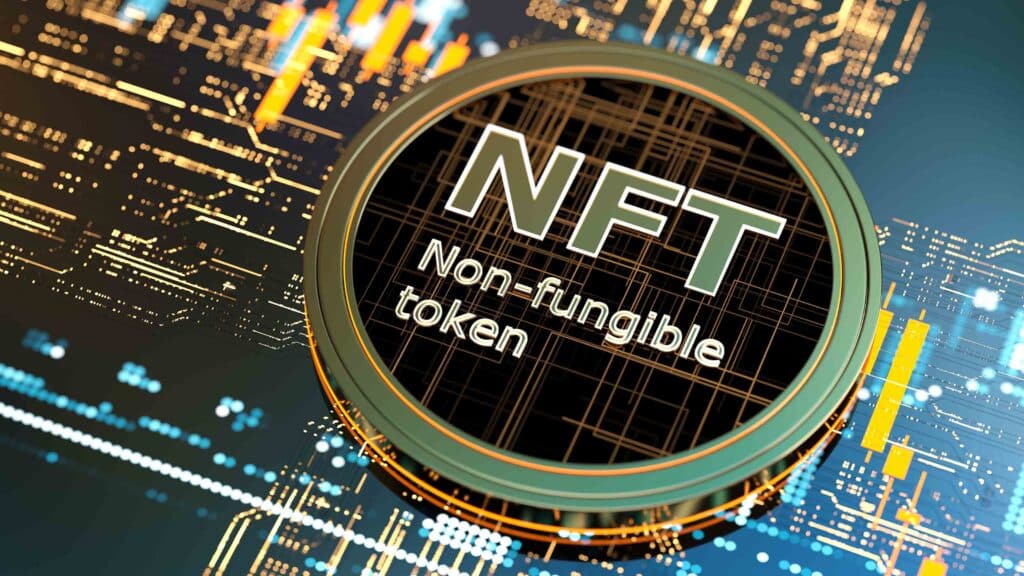In recent years, the digital world has witnessed a revolution that has left many people bewildered yet intrigued – the rise of Non-Fungible Tokens, or NFTs. These blockchain-based digital assets have taken the art, entertainment, and tech industries by storm, redefining the way we perceive ownership and value in the digital age. This article aims to demystify NFTs, exploring their nature, functionality, and the reasons behind their skyrocketing popularity. From digital art to virtual real estate, NFTs have transcended traditional boundaries, creating a buzz that is impossible to ignore.
1. Understanding Non-Fungible Tokens
Non-Fungible Tokens, or NFTs, represent a unique form of digital asset stored on a blockchain. Unlike cryptocurrencies such as Bitcoin or Ethereum, which are fungible and interchangeable on a one-to-one basis, NFTs are indivisible and cannot be exchanged on a like-for-like basis. Each NFT possesses distinctive properties, making it distinguishable from all other tokens on the blockchain.
NFTs are created through a process known as “minting,” where a digital file, such as an image, video, audio clip, or even code, is tokenized, essentially transforming it into a unique, one-of-a-kind asset. This process is recorded on the blockchain, establishing a transparent and immutable ownership history.
2. Ownership and Provenance
One of the key advantages of NFTs is the unparalleled ownership and provenance tracking they offer. Traditional digital files are easily copied and shared without any tangible proof of originality or ownership. NFTs change this dynamic by providing a secure and verifiable record of ownership. When someone purchases an NFT, they acquire a digital certificate of ownership that is stored on the blockchain. This certificate includes information about the asset, its creator, and the current owner.
This transparent and immutable ledger ensures that the true ownership of the digital asset is indisputable. It also creates a sense of scarcity, as there is only one official owner of the NFT, despite the digital asset itself being easily replicable. This uniqueness adds significant value, especially in the realm of digital art and collectibles.
3. Digital Art and Collectibles
Perhaps the most famous use case of NFTs is in the world of digital art and collectibles. Artists, illustrators, and creators have flocked to NFT marketplaces to showcase and sell their work. NFTs allow artists to retain control of their creations and receive royalties on secondary sales. This marks a significant departure from the traditional art world, where artists often lose control of their work once it’s sold.
NFTs have also breathed new life into the concept of collectibles. In the virtual world, people can own unique digital collectibles, from trading cards to virtual pets. These items can be bought, sold, and traded just like physical collectibles, creating a vibrant and speculative market.
4. Gaming and Virtual Real Estate
NFTs have infiltrated the gaming industry, offering players the opportunity to own in-game assets as NFTs. These assets can include skins, weapons, characters, and even virtual real estate. Players can trade these NFTs within and across games, creating a sense of digital scarcity and value.
Virtual real estate is another fascinating NFT application. In virtual worlds and metaverse platforms, users can purchase land and property as NFTs. This ownership can be used for various purposes, from building virtual homes to hosting events, concerts, and businesses within these digital spaces.
5. Celebrities and NFTs
The involvement of celebrities in the NFT space has further propelled its popularity. Renowned artists, musicians, athletes, and actors have embraced NFTs to connect with their fans in novel ways. Some have released exclusive music, limited-edition artwork, or personal memorabilia as NFTs, capitalizing on their fame and engaging a global audience.
This celebrity endorsement not only legitimizes NFTs but also introduces a wider audience to the concept. It highlights the potential for NFTs to redefine how we engage with celebrities and the memorabilia associated with them.
6. Challenges and Concerns
Despite their meteoric rise, NFTs are not without their controversies and challenges. Environmental concerns have arisen due to the energy-intensive blockchain networks on which many NFTs are built. Additionally, there have been cases of copyright infringement, plagiarism, and scams in the NFT space, leading to concerns about legal and ethical issues.
Conclusion
Non-Fungible Tokens have transformed the digital landscape, offering unique opportunities for creators, collectors, gamers, and even celebrities. Their ability to establish ownership and provenance in the digital realm has sparked a revolution in how we perceive and interact with digital assets. While NFTs have their fair share of challenges and controversies, their popularity continues to grow, suggesting that they may become an enduring part of our digital future. Whether you’re an artist, a gamer, or simply curious about the digital world, NFTs are worth keeping an eye on as they continue to shape the future of the internet and ownership in the digital age.


1 Comment
This was both informative and hilarious! For further reading, check out: LEARN MORE. Any thoughts?